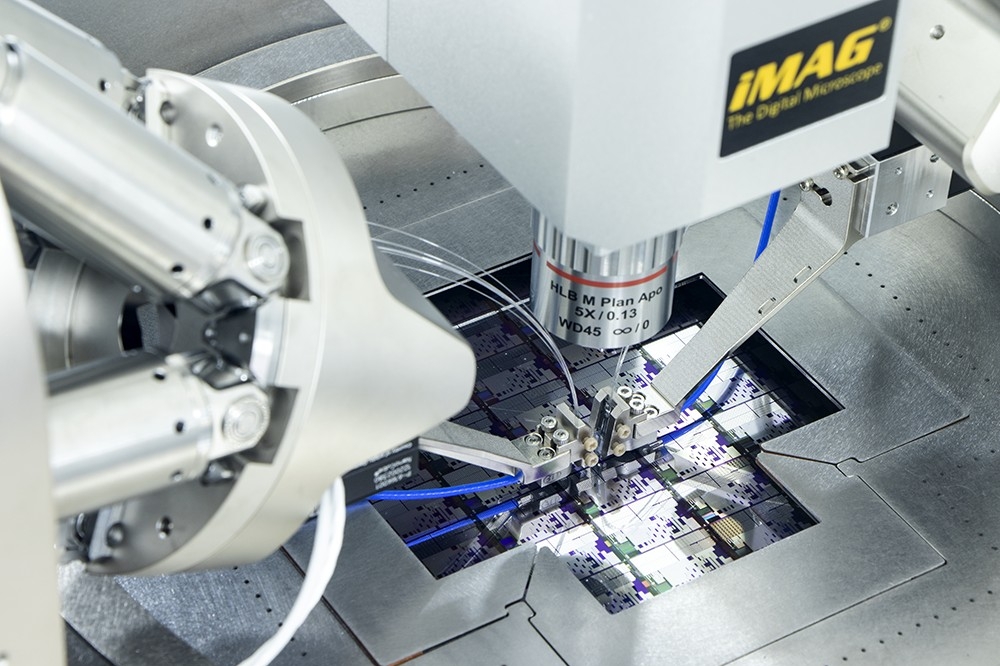Lightmatter achieves 16-wavelength bidirectional link on standard optical fibre

The company says this breakthrough advances chip I/O design by increasing bandwidth per fibre compared to existing co-packaged optics solutions, and enables more powerful, efficient, and scalable datacentres
Lightmatter, a company focusing on photonic supercomputing, has announced it has developed a 16-wavelength bidirectional dense wavelength division multiplexing (DWDM) optical link operating on one strand of standard single-mode (SM) fibre. Powered by Lightmatter's Passage interconnect and Guide laser technologies, the company says this achievement shatters previous limitations in fibre bandwidth density and spectral utilisation, setting a new benchmark for high-performance, resilient datacentre interconnects.
With the rise of complex trillion-parameter “mixture of experts” models, scaling AI workloads is increasingly bottlenecked by bandwidth and radix (I/O port count) limitations in datacentre infrastructure. Lightmatter says its Passage technology delivers an unprecedented 800G bidirectional bandwidth (400G transmit and 400G receive) per single-mode fibre for distances of several hundred metres or more. This achievement advances chip I/O design by simultaneously increasing both radix and bandwidth per fibre compared to existing co-packaged optics (CPO) solutions, the company adds.
While commercial bidirectional transmission on a single fibre has been limited mainly to two wavelengths, achieving 16 wavelengths (also referred to as “lambdas”) has historically required multiple or specialised fibres. According to Lightmatter, this milestone addresses significant technical challenges related to managing complex wavelength-dependent propagation characteristics, power budget constraints, optical nonlinearity, and mitigating crosstalk and backscattering in a single fibre. Such innovations could pave the way for the next major advances in AI model development, which demand more extensive and efficient high-bandwidth networking than exists today.
“Datacentres are the new unit of compute in the AI era, with the next 1000X performance gain coming largely from ultra-fast photonic interconnects,” said Nicholas Harris, founder and CEO of Lightmatter. “Our 16-lambda bidirectional link is an architectural leap forward. Hyperscalers can achieve significantly higher bandwidth density with standard single-mode fibre, reducing both capital expenditure and operational complexity, while enabling higher 'radix' – more connections per XPU or switch.”
Alan Weckel, co-founder and analyst at 650 Group, added: “Lightmatter's innovation arrives at a pivotal moment for hyperscale AI infrastructure. The ability to dramatically increase bandwidth density on existing single-mode fibre, coupled with the technology’s robust thermal performance, is a game-changer for datacentre scalability and efficiency. This solves one of the most pressing challenges in AI development and brings advanced CPO a giant step closer to market.”
According to Lightmatter, the new breakthrough incorporates a proprietary closed-loop digital stabilisation system that actively compensates for thermal drift, ensuring continuous, low-error transmission over wide temperature fluctuations. In addition, architectural innovations aim to make the Passage 3D CPO platform inherently polarisation-insensitive, maintaining robust performance even when the fibres are being handled or subject to mechanical stress. Standard SM fibre, while offering immense bandwidth potential, does not inherently maintain light's polarisation state, unlike specialised and more costly polarisation-maintaining fibre. By achieving polarisation insensitivity, Lightmatter says it enables the use of cost-effective SM fibre for its bidirectional DWDM technology.
This combination of fibre bandwidth density, efficient spectral utilisation, and robust performance makes Lightmatter's Passage technology foundational for the industry’s transition from electrical to optical interconnects in AI datacentres, the company concludes. It aims to empower customers to accelerate development of larger and more capable AI models with more powerful, efficient, and scalable datacentres.

































